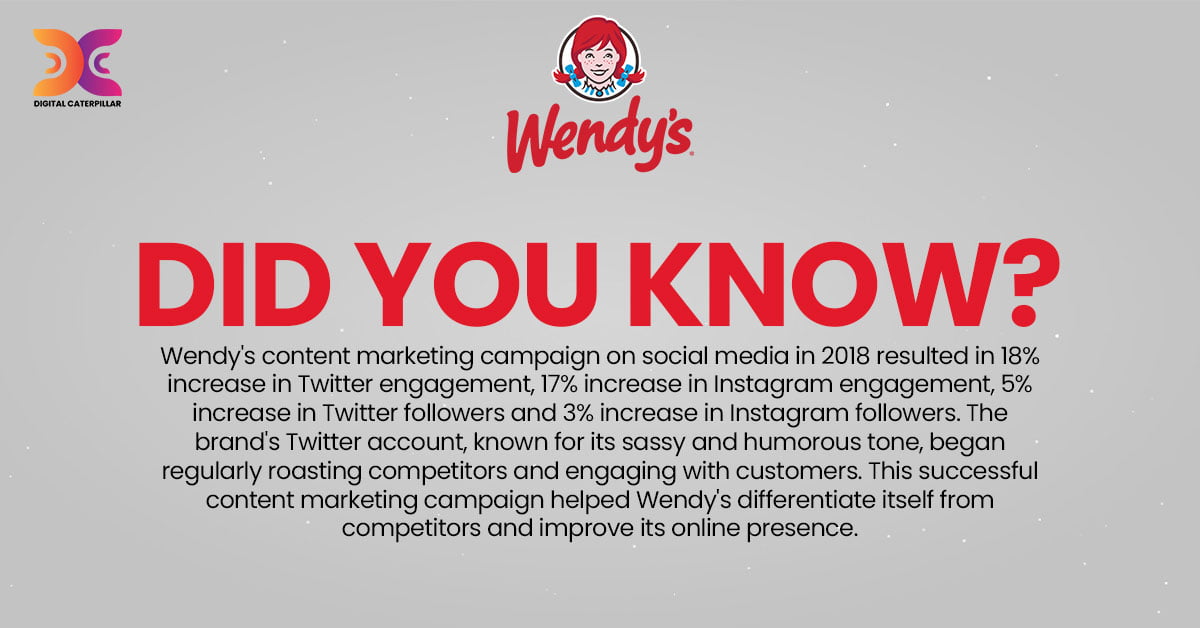Staying updated with the latest marketing strategies is important to ensure your business remains relevant in front of your target audience. More than 70% of marketers are creating more content this year than the last, that is to say, the content marketing world is continuing to grow in popularity.
Your business must use content marketing to attract new customers and retain the existing demographic. So, whether you’re just starting or looking for ways to improve your current strategy, this guide provides detailed content marketing tips to help you leverage the power of content.
What Is Content Marketing
Content marketing is a strategic approach focused on creating and distributing valuable, relevant, and consistent content to attract and retain a clearly defined audience — and, ultimately, drive profitable customer action. In other words, content marketing is the art of communicating with your customers and prospects without pushing sales. Instead of pitching your products or services, you deliver updated and quality information to your customers or clients. This generates better customer retention rates, increases the number of sales, and enriches the revenue stream leading to maximum profit.
The History of Content Marketing
Content marketing has been around for a long time. It’s the cornerstone of public relations and the backbone of marketing. But in recent years, there’s been a shift in how businesses approach content marketing.
The days of creating mind-numbing, self-promotional fluff pieces are over. Today’s buyers are bombarded with too much information, too many choices, and too much noise. They tune out traditional marketing messages because they’re sick of being marketed to.
Therefore, if you want to be successful with content marketing, you must understand the needs of your target audience. Using this information, you can create content that addresses those requirements. Your content must be relevant, engaging, and informative.

Content Marketing – The Soul of Any Campaign
The heart of a content marketing strategy is creating exciting and valuable content for your target audience. But there’s more to it than that. Your content also needs to be distributed in a way that will reach your target audience. And once you have their attention, you need to retain it by providing ongoing value.
That is why content marketing is not a one-time event or campaign. It’s an ongoing process that should be integrated into your overall marketing strategy. When done correctly, it can help you achieve your business goals by building trust and credibility with your audience, generating leads and sales, and even creating loyalty and advocates for your brand.
Now is the time to start if you’re not already using content marketing as part of your marketing mix. The benefits are too great to ignore. Therefore, you can also hire content marketing services to get help from skilled professionals.
Goals of Content Marketing
Content marketing experts aim to create content that is:
- Valuable: Useful, interesting, and/or helpful to your target audience
- Relevant: Relevant to your audience’s needs and interests
- Engaging: Compelling enough to encourage your audience to take some kind of action
When done correctly, content marketing can help you achieve a variety of business goals, including:
- Generating leads by providing valuable information that encourages your target audience to take action
- Nurturing leads by providing additional valuable information that keeps them engaged with your brand
- Converting leads into customers by providing compelling information that encourages them to purchase
How Is Content Marketing Changing the Game
60% of marketers create at least one content piece every day. Why? Because the approach is extremely effective in helping businesses reach their goals. Let’s take a look at three ways that content marketing is changing the game:
1. Social Media Is Playing a Bigger Role than Ever Before
Social media platforms like Twitter, Facebook, and Instagram are excellent channels to share your content. Social media is now one of the most important channels for content distribution.
2. Visual Content Is Becoming More Popular
People are attracted to visuals. This is why videos, infographics, and other forms of visual content are becoming increasingly popular. According to Biteable, 68% of marketers believe video content has a higher ROI than Google Ads. Therefore, your content marketing strategy must feature visual content that captivates the audience.
3. Interactive Content Is On the Rise
Interactive content is a great way to get your audience involved in your content marketing strategy. Quizzes, polls, and surveys are all excellent examples of interactive content.
Types of Content Marketing with Examples
There are many different types of content marketing, each with its advantages and disadvantages. Here are some of the most popular types of content marketing examples to show how they can be used effectively:
Online Content Marketing

This type of content marketing involves creating and distributing online content, such as blog posts, e-books, video tutorials, and infographics.
Pro: Relatively easy to produce and distribute and can reach a large audience quickly.
Con: Can be difficult to stand out from the crowd if you’re not producing high-quality or unique content.
Example:
Online content marketing may be in the following formats:
- Blogging – Share your expertise and insights on your industry, product, or service through blog posts.
- Social media – Use social media platforms like Twitter, Facebook, and LinkedIn to share your content and engage with potential and current customers.
- Videos – Create helpful or entertaining videos that showcase your product, service, or company.
- E-newsletters – Provide valuable information to your subscribers through a monthly or weekly e-newsletter.
- Infographics – Use infographics to make complex data more visually appealing and easy to understand.
- Whitepapers and e-books – Share in-depth, research-driven content that details a specific topic.
Paid Ad Content Marketing

This type of content marketing involves paying to have your content featured on another website or blog.
Pro: The advantage of this approach is that it can reach a large audience quickly and increase your brand’s visibility.
Con: The downside is that it can be expensive, and you may not have much control over the reach of your content.
Example:
Some examples of paid ads include:
- Banner ads – these are typically displayed at the top or bottom of a web page and are usually clickable, redirecting users to the advertiser’s website.
- Sponsored posts – posts on social media platforms that have been paid for by a business. They often include promotional content, such as discounts or coupon codes.
- Influencer marketing– this is when businesses work with social media influencers to promote their products or services. Influencers typically have a large following and can help to reach a wider audience.
Podcast Content Marketing

Podcast content marketing can be a great way to reach out to new and existing customers. It can also be a great way to promote your brand or Product. This type of content marketing involves creating and distributing audio content, typically a podcast.
Pro: Podcasts are easy to create, and they have a wide reach.
Con: However, if you want to stand out, you need to create unique and high-quality content.
Example:
Some well-known businesses that have utilized podcast content marketing include Gimlet Media, Shopify, and MailChimp. Gimlet Media is a podcast network that was founded in 2014. Since its inception, the company has produced several popular podcasts, including “StartUp,” “Reply All,” and “Homecoming.” These podcasts have been used to promote Gimlet’s various products and services, as well as to educate listeners about the world of business.
Shopify is a Canadian e-commerce company that was founded in 2004. The company has utilized podcast content marketing to promote its products and services, as well as to teach listeners about topics such as online marketing and e-commerce. In addition, Shopify has released many podcasts that focus on inspiring entrepreneurs and helping them build successful businesses.
MailChimp is an email marketing company that was founded in 2001. The company has used podcast content marketing to promote its product and services, as well as to educate listeners about topics such as email marketing and online advertising. In addition, MailChimp has released some podcasts that focus on inspiring entrepreneurs and helping them build successful businesses.
Blog Content Marketing

This type of content marketing involves creating and distributing blog posts.
Pro: Blog content marketing is a great way to get your name out there and reach many people.
Con: The downside of this type of blogging, however, can be that it’s difficult if you’re not producing unique enough articles or blog posts – which means competition will always remain high!
Example:
Coca-Cola has been utilizing content marketing for many years, and its blog is a great example of how to use blogging to build brand awareness and connect with customers. The blog is full of interesting stories about Coke’s history, culture, and innovation. It’s also a great resource for recipes and ideas for using Coke in unique ways.
Social Media Content Marketing

This type of content marketing involves creating and distributing content on social media platforms, such as Facebook, Twitter, and Instagram.
Pro: With social media content marketing, you can have a large audience that is reached quickly.
Con: The downside? It’s tough to be unique when there are so many other brands producing great quality material!
Example:
Social media content marketing can take many forms, including blog posts, infographics, images, videos, and more. The key is to create content that is interesting and engaging for your target audience, and that provides value in some way. For example:
- A blog post about the benefits of social media marketing could be useful for small businesses that are considering using social media to promote their business.
- An infographic about the different types of social media platforms could be helpful for someone who is trying to decide which platform is right for them.
- A video tutorial on how to use social media to market your business could be beneficial for someone new to social media marketing.
The possibilities are endless, and it’s up to you to decide what type of content will be most helpful for your target audience.
Infographic Content Marketing

This type of content marketing involves creating and distributing infographics.
Pro: The advantage of infographic content marketing is that it can be an effective way to communicate complex information in a visually appealing way.
Con: The downside is that it can be time-consuming and expensive to produce high-quality infographics.
Example:
Some businesses that utilized infographics content marketing include Canva, IBM, and Pepsi. These businesses realized the value of using infographics to communicate their brand messages to consumers in an engaging and visually appealing way. By incorporating infographics into their content marketing strategies, these businesses were able to achieve better results than those who did not use them.
The use of infographics has grown exponentially in recent years, as more businesses have realized the value of using them to communicate their brand messages. In fact, according to a report by HubSpot, the use of infographics increases the sales of a business by 80%.
Video Content Marketing

This type of content marketing involves creating and distributing video content, such as product demonstrations, interviews, and how-to guides
Pro: Video content marketing is a great way for businesses of all sizes to share their stories with the world.
Con: It’s easy and affordable, but sometimes you need high-quality video production to attain that audience engagement.
Example:
Businesses can use different kinds of video content for marketing purposes. Explainer videos are a great way to introduce your brand or product to potential customers. You can also use customer testimonials and product demonstrations to show off your wares in a more relatable way.
Additionally, behind-the-scenes footage and company culture videos can help humanize your brand and make potential customers feel more connected to you. Whatever type of video content you choose, make sure it is high quality and engaging so that viewers will stick around until the end.
With so many different types of content marketing out there, it can be tough to know where to start. By understanding the different options and what they entail, you can start planning an effective content marketing strategy for your business. Try out these different options and see which ones work best for you.
How to Measure Performance in Content Marketing
To measure the performance of your content strategy, there are a few key metrics you should keep in mind.
- Engagement rates: Measure how people interact with your content, such as their likes, shares & comments. Engagement rates can give you a good idea of how well your content is resonating with your audience.
- Reach: Check your content’s reach. A large reach can be indicative of successful content marketing.
- Traffic: Pay attention to the traffic your content generates for your website or blog. If you’re using your content to drive traffic and leads, then this is an important metric to track. According to HubSpot, companies with a blog receive 55% more traffic than businesses that don’t.
- Shares: A high number of shares can be a good indicator that people are finding your content valuable enough to share with others.
- Leads generated: Observe the number of leads your content generates. It is important to consider this metric if you are wanting to generate leads via content marketing.
- Sales generated: Your revenue generation through content drill-down reports can help deduce which content is performing well, so you may craft a strategy accordingly.
- Cost per lead/sale: A useful metric to track if you’re looking to optimize your content marketing for cost-effectiveness by checking your leads or sales with customer-journey reports.
- Return on investment (ROI): Take into account all of your costs, including time and money, and compare them to your revenue generated to see the overall profitability of your content marketing efforts.
- Brand awareness: Find out how well people know and remember your brand. If your goal with content strategy (or even just blogging) is brand awareness, then keep an eye on your click-through rate, as this will indicate customer interest.
- Sentiment: If you are publishing content on social media platforms, measuring customer reactions can help you optimize your marketing strategy.
5 Best Content Marketing Platforms to Create an Effective Strategy
More than 60% of marketers struggle to produce engaging content. So creating quality content can be difficult when you don’t know what content marketing tools or platforms you can make use of. Check out the five platforms listed below to take your content game to the next level.
1. Sprout Social – For Social Media Content
Sprout is a platform that helps you create and publish great social media content. With Sprout, you can easily schedule and publish your content! Track who’s talking about your brand, and measure results.
2. AdRoll– For Native Content
AdRoll is a native advertising platform that helps you reach your target audience with relevant & engaging content. Generate attractive ads that blend in with your website or blog and target your readers with precise interests and demographics.
3. Scoop.it – For Content Curation
Scoop.it is a content curation platform that makes it easy to find and share great content from around the web. Curate content from your favorite sources and share it with your audience through social media or your website.
4. Outgrow – For Personalized Content
Outgrow is a personalized content platform that helps you create tailored content for your audience. You can easily create quizzes, surveys, and other interactive content that will engage and educate your readers.
5. Google – For Trending Content
For a good reason, Google is the world’s largest search engine. With Google, you can easily find the latest content from around the web. Whether you’re looking for news, trends, or just something new to read, Google is a great place to start.

How to Integrate Content Marketing with SEO
As a marketer, you know that SEO and content marketing are two of the most important channels for driving organic traffic to your website. But what if there was a way to combine the two to get even more traffic and engagement?
By integrating content marketing with your SEO efforts, you can supercharge your results and significantly increase website traffic. Here’s how:
- Make sure your website is optimized for search engines – This means ensuring your site is well-structured, easy to navigate and includes content & image optimization.
- Create high-quality, keyword-targeted content – This is the heart of any good content marketing strategy. Ensure your blog posts, infographics, and other pieces include keywords and high-quality content with engaging information.
- Promote your content across the web with Off-Page SEO – Get the word out about it by sharing it on social media, submitting it to directories and aggregators, and blogging on other sites.
- Measure your results and adjust accordingly – Use Google Analytics or another analytics tool to track your progress and see what’s working (and what’s not). Make changes to your strategy as needed to continue seeing results.
Wrapping Up
So, what does all of this mean for content marketing in 2023? Simply put, content marketers must be prepared to change and adapt as the industry evolves. The best way to do this is by keeping a close eye on the latest trends and being willing to experiment with new content types & ideas.
Additionally, it’s important to continuously measure the performance of your content strategy, so you can make necessary adjustments along the way. Lastly, don’t forget to integrate your content marketing efforts with other aspects of your digital marketing strategy for maximum results.
Are you ready for the challenges that 2023 will bring? We are!
Let us help you get ahead of the curve today.










